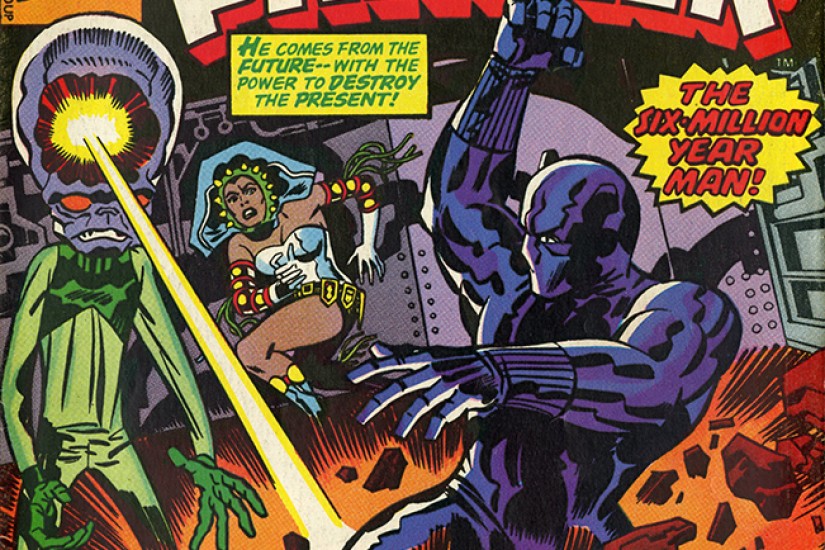The character Black Panther first appeared in 1966 in Fantastic Four #52, and he became an Avenger two years later. He was the first black superhero in the Marvel universe, and the first African superhero as well. The Panther was among the first of the wave of black characters who began appearing in mainstream comics in the mid-1960s, in response to the changing climate brought about by the Civil Rights movement and its demand for the integration of African Americans into mainstream American culture.
In 1965, Dell Comics had published Lobo, the first US comic series to star an African-American hero. The series was cancelled after just two issues, as it proved too controversial for popular sale. But following the Panther, other black superheroes slowly took the stage. The Falcon, who appeared in Captain America #117 in 1969, was Marvel’s first African-American superhero. DC’s Teen Titans introduced a recurring (although not initially superpowered) African-American character named Mal Duncan in 1970, and in 1971 the Panther’s co-creator Jack Kirby introduced DC’s first black superhero, the Black Racer, in Kirby’s series New Gods. 1972 saw the debuts of Marvel’s Luke Cage and John Stewart, an African-American member of DC’s Green Lantern Corps. In 1975, the Kenyan mutant Storm — the first black superheroine in mainstream comics — debuted in Giant-Size X-Men #1.
Though there were many different cultural, political, and social forces shaping the visual rhetoric of the black power movement during this period, the BPP, founded in Oakland in 1966, was one of the first groups to popularize the phrase “Black is Beautiful.” They did so in response to the paucity and stereotypical quality of black images reflected across all forms of popular culture in the United States, including comic books. In 1973, Marvel reacted to the changing climate brought about by the BPP and others by seeking to rebrand one of its comics, called Jungle Action, that now seemed too racist for changing times.
Jungle Action had originated at Marvel’s 1950s predecessor Atlas out of the tropes of the Tarzan movies and other popular jungle serials — tropes that were painfully outdated when Marvel decided to reprint the series in 1972. Jungle Action’s characters Lorna Queen of the Jungle, Tharn the Magnificent, and Jann of the Jungle are white adventurers whose stories play out against the backdrop of non-specific African jungles. The Africa that they occupy is peopled by a wide variety of exotic plants and animals, European and American mercenaries, and black characters who — even when they play central roles, such as Lorna’s mentor M’Tuba — are depicted as primitive stereotypes.

